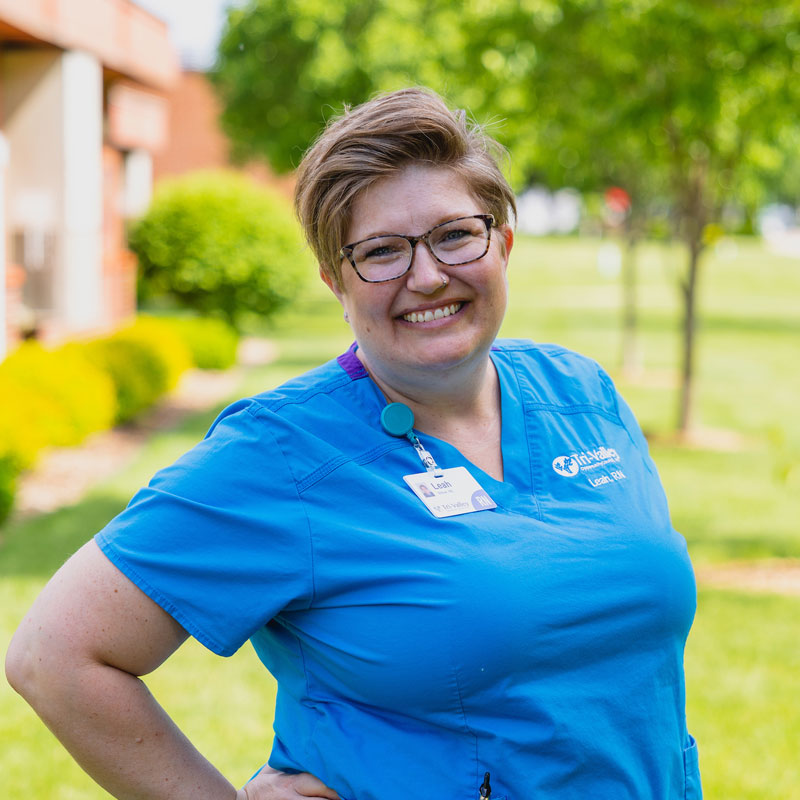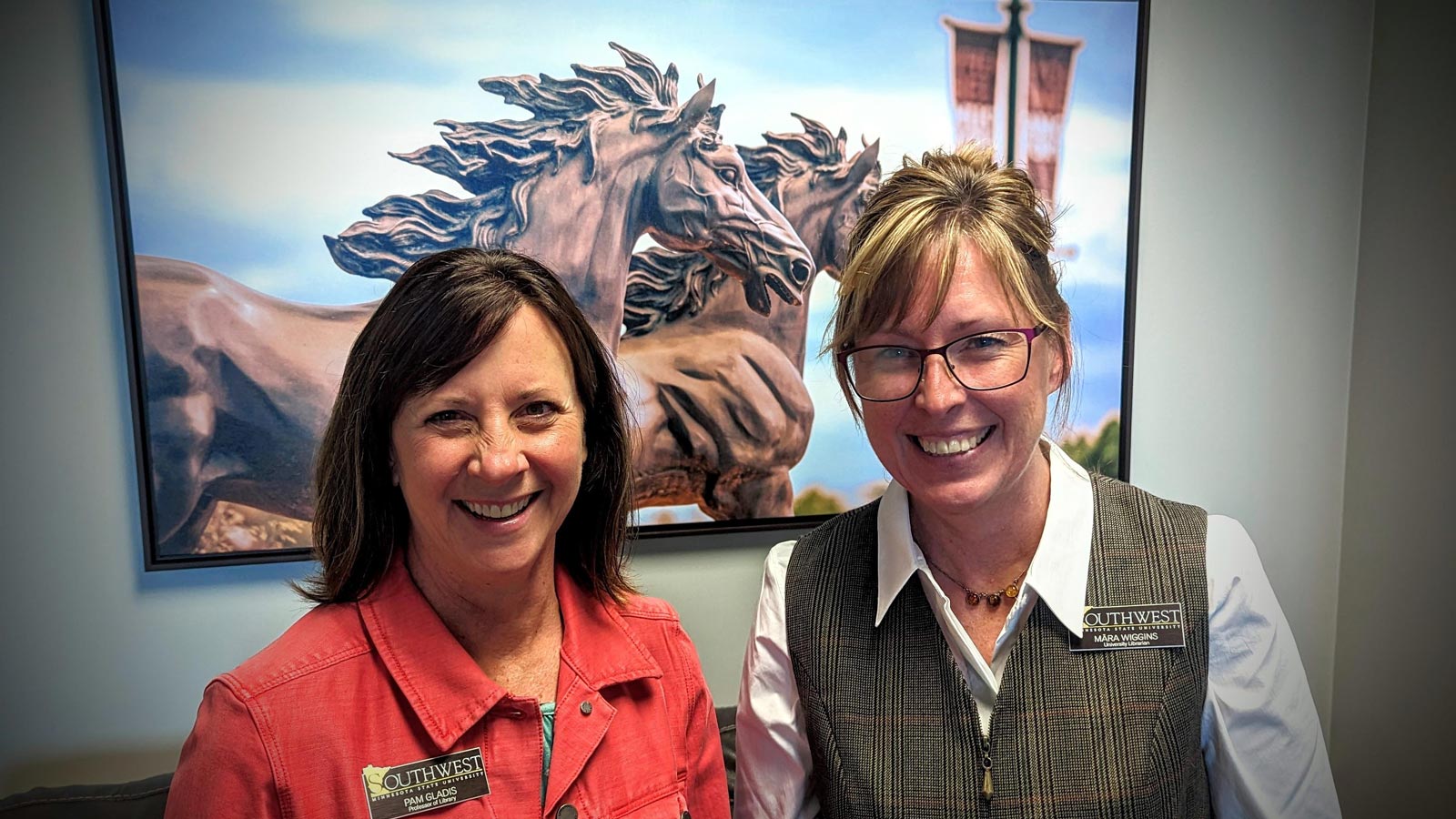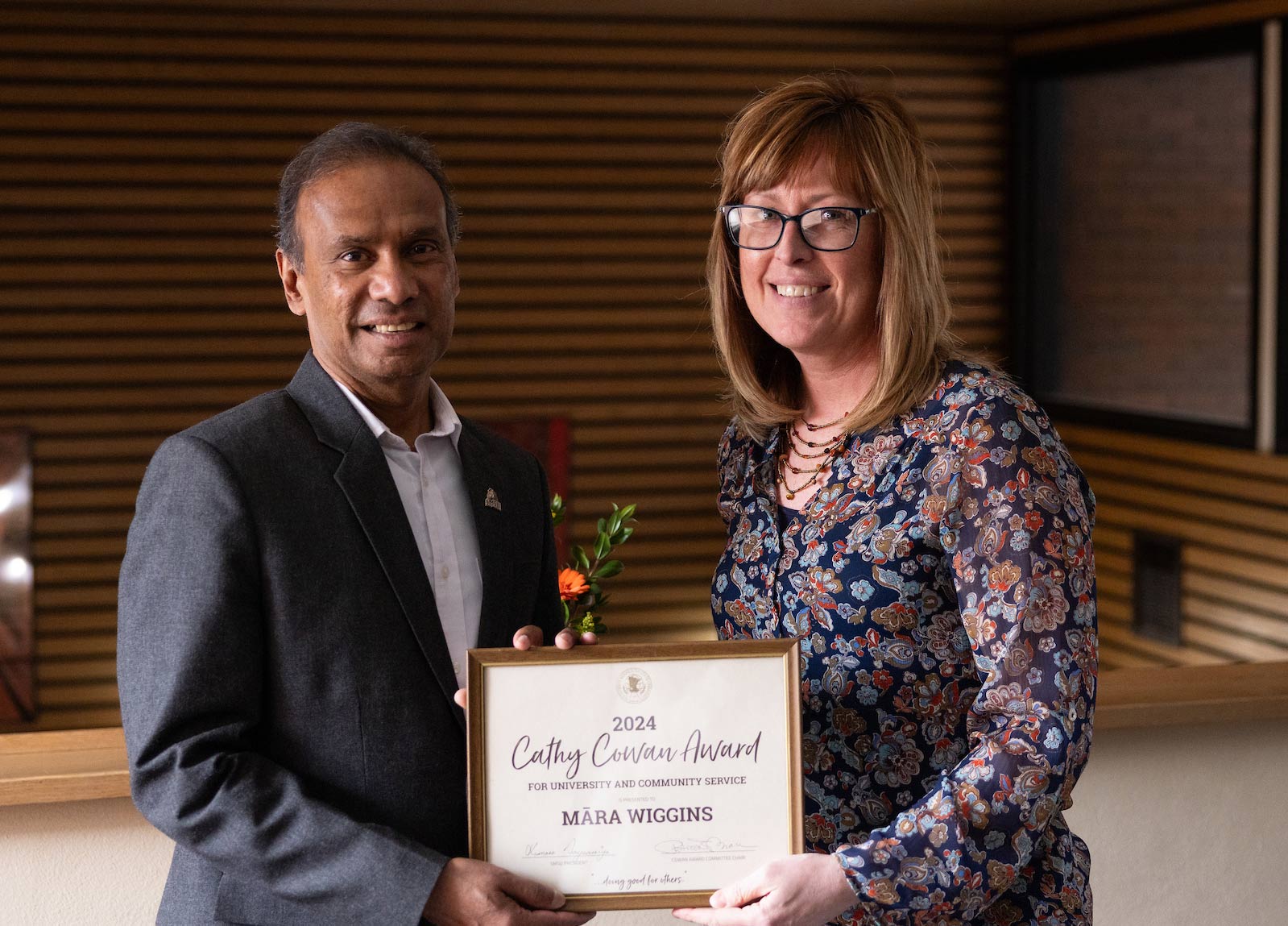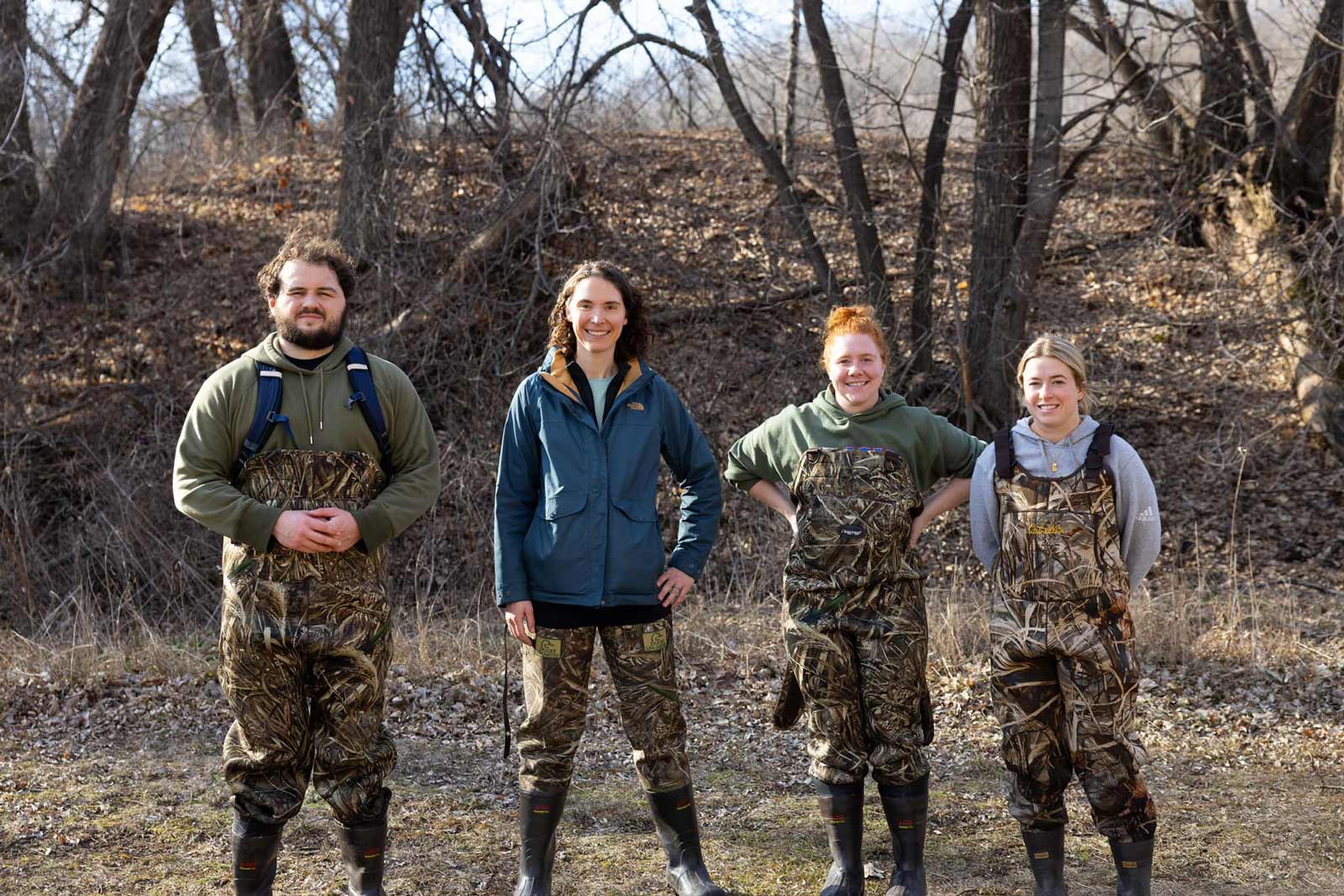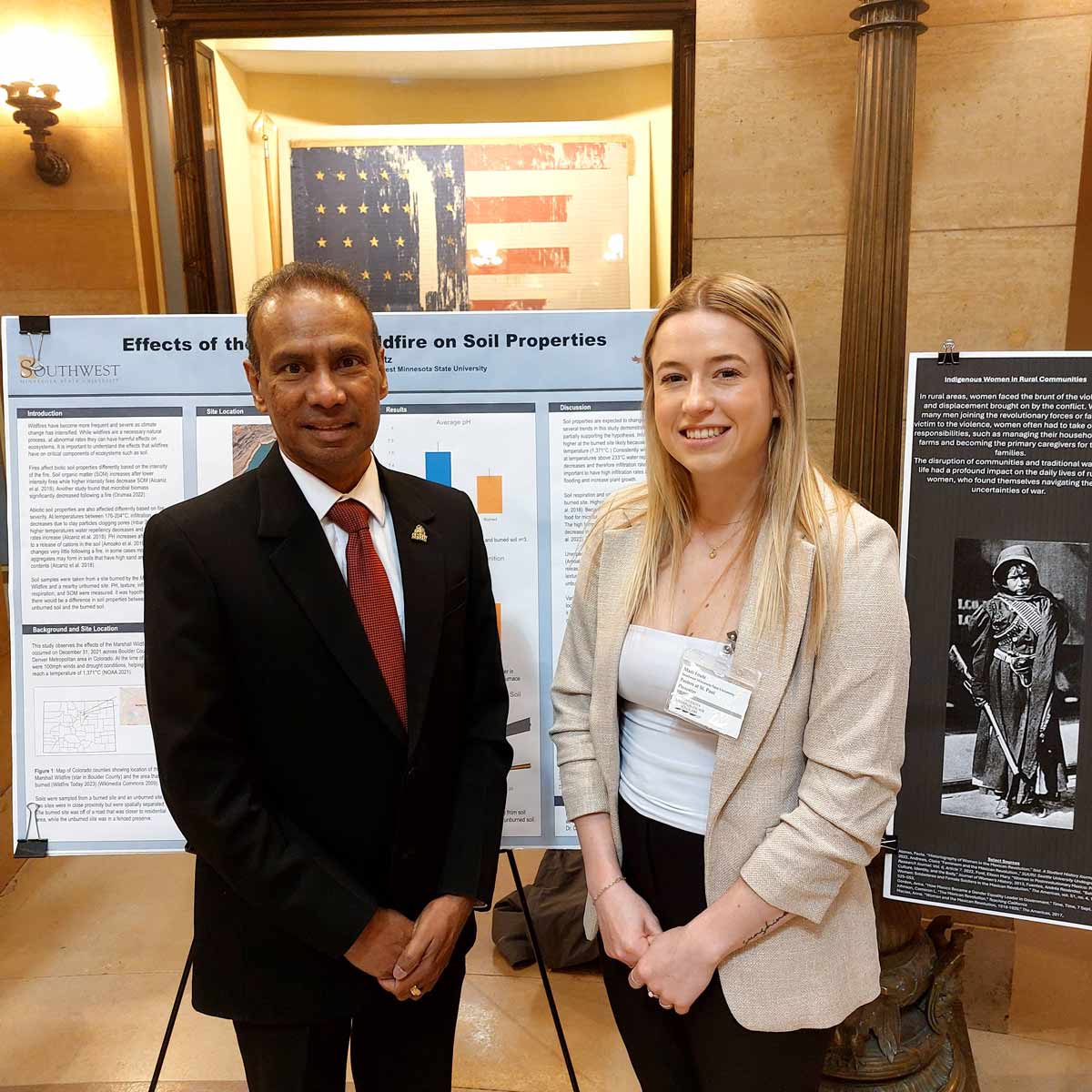Librarians at the Center of Student Life
Published Friday, December 01, 2023
by Zach Miller of Minitex
How much do you know about Minnesota State? I didn't know much at all until my colleague, Jesus Maldonado, and I spent an afternoon on one of its campuses with Pam Gladis and Māra Wiggins. Gladis and Wiggins each hold the title Professor of Library at Southwest Minnesota State University (SMSU) in Marshall, Minnesota. Wiggins chairs the department, which calls McFarland Library home.
Minnesota State is a highly-integrated network of 26 colleges and seven universities located on a whopping 54 campuses. It's the third largest state-based education system in the country. Students can transfer very easily between campuses. In fact, making the transfer process as seamless as possible is one of Chancellor Scott Olson's top priorities. It happens most often at the sophomore level. A student might complete their general requirements on a convenient campus (perhaps it's close to home) before transferring to the school that has the program they want. That's not to say all the schools are the same. Far from it.
SMSU has its own formula, and it's working. Despite the looming "enrollment cliff" threatening colleges and universities in Minnesota and across the country, enrollment at SMSU has increased. Some of the unique programs that draw students to campus include Social Work, Agricultural Education, Culinology (a blending of culinary arts with research and development), and Justice Administration, a program that trains professionals to support law enforcement. The school is also widely renowned for the quality of its teacher-training programs and its across-the-board affordability.
SMSU's outreach to students is even more notable. Their Access Opportunity Success program is evidence that their stated vision, "to be recognized throughout Minnesota and beyond for being an inclusive and student-centered university," is more than just words on a page. The program is open to traditionally underrepresented students: students of color, first-generation college students, and those from low-income families. Each student in the program is assigned a student success to impart information they might not have learned growing up. The two meet on a monthly basis, and their conversations can cover any topic the student chooses, not just academics. The program is based in the Deeann Griebel Student Success Center, which also hosts an outpost of the main library called the Education Curriculum Library.
AOS students also have the option to apply for SMSU's Summer Bridge program. Summer Bridge brings a cohort of 40 AOS students to campus early. They aren't just hanging out in dorms and doing trust falls on the campus green, though. The students earn eight college credits in just three weeks (the university waives the cost of tuition). They're in class beginning early in the morning, and their work continues through the day and into the night. That hard work pays off when they begin fall semester (often a stressful time for new students) with the opportunity to build on their early gains or lighten their course load just a bit. Summer Bridge students also know their way around campus before their other classmates have even arrived. They know faculty members, too, including staff from the library.
Often, but not always, Summer Bridge includes Liberal Education Program (LEP) 101, a course that is required for all SMSU students. It serves as a kind of introduction to college itself. Each freshman class is divided into cohorts of three to four sections, with about 20 students in each section. LEP is a formative experience for many students, yielding tight-knit groups of students and faculty. Four years ago, SMSU began the practice of assigning one section in each cohort to a professor from the library. In addition to Wiggins and Gladis, that could be one of their colleagues, Thomas Flynn or Maria Kingsbury. Teaching the course has significantly increased the respect and common cause felt among library staff, academic faculty, and athletic coaches (who are also considered faculty at SMSU). Regularly teaching a required, foundational, course puts library faculty on a first-name basis with the student body at a level that is exceptional for an academic library. Students continue to visit them in their offices, even after they've completed LEP. "Summer Bridge students, all students really, want to be seen, and known," says Wiggins. "And in the library, they are."
Another program assigns a faculty liaison to every athletic team. Gladis is paired with the football team this year, and Wiggins with wheelchair basketball. It's fair to wonder if these extra assignments are seen as a burden by library staff, but that's not the case. "We all love it," exults Gladis. "That's what makes this so good." They eat lunch in the cafeteria (which Jesus and I can confirm is excellent) at least once per week, just to be even more present for the student body. It makes sense. If there's another opportunity to get a smile and a high-five from a student, why not take it?
——————————————————
The original story was published Oct. 27, 2023 on the Minitex website: https://minitex.umn.edu/news/2023-11/librarians-center-student-life-southwest-minnesota-state-university
We thank Zach Miller and Minitex for allowing us to share this story with our Mustang Family.Photo Courtesy of Minitex
Minitex is an information and resource sharing program of the Minnesota Office of Higher Education and the University of Minnesota Libraries.


